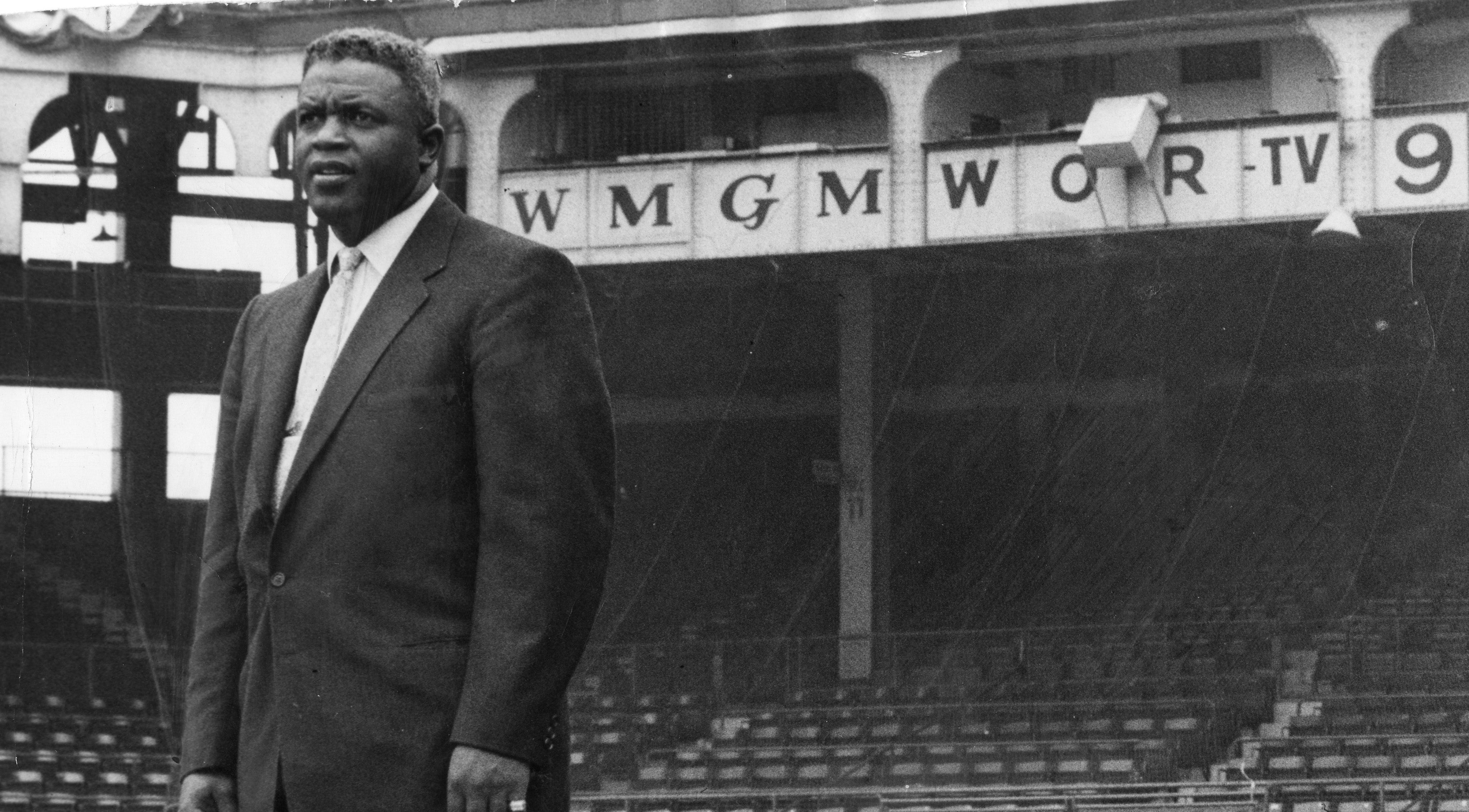- Home
- Our Stories
- #Shortstops: Jackie's brilliance
#Shortstops: Jackie's brilliance
“ROBBY STEALS SHOW” proclaimed the New York Daily News on June 30, 1947, recounting Jackie Robinson’s stellar performance the day before. Robinson collected five hits, three stolen bases and two RBI in a doubleheader against the New York Giants at the Polo Grounds.
The first draft of that historic performance – a scorecard – is preserved at the Hall of Fame.
Be A Part of Something Greater
There are a few ways our supporters stay involved, from membership and mission support to golf and donor experiences. The greatest moments in baseball history can’t be preserved without your help. Join us today.
Only in Robinson’s first visit to the Polo Grounds, two months earlier, did more people attend a Giants game in 1947 than the 52,147 who showed up on June 29.
The rookie first baseman played the hero in the opener, delivering a game-tying RBI single in the ninth inning, then stealing second and coming around to score the winning run in a 4-3 Dodgers victory.
The scorecard shows he excelled in the second game as well, connecting for singles on each of his first four at bats, driving in a run and adding two more stolen bases.
Although the Dodgers lost the second game, 9-5, Robinson’s three stolen bases on the day contributed to his National League-leading 29 steals that year.
Swept up in the importance of his role as a trailblazer, it is easy to forget Robinson’s excellence as a baseball player.
The skills he showed during that Sunday doubleheader were on display throughout the 1947 season, when he earned the inaugural Baseball Writers’ Association of America Rookie of the Year Award.
Continuing this excellent play for the entirety of his 10-year NL career, Robinson was awarded the National League MVP in 1949, voted an All-Star six times, and elected to the Baseball Hall of Fame in 1962, his first year of eligibility.
Preserved in the National Baseball Hall of Fame and Museum’s collection, this scorecard, used to score the second game of the day, shows an unforeseen consequence of Dodgers manager Burt Shotton’s lineup juggling.
As he sought the right mix for what would become a pennant-winning lineup, Shotton often experimented with the batting order, moving his hitters up and down to see what worked best.
The experiment continued throughout the season and even into the World Series, where the Dodgers used three different lineup combinations in their seven-game loss to the Yankees.
Printed in advance of the doubleheader, the scorecard lists a lineup different from the one Shotton used.
To correct the lineup, the scorer chose to write the number of the new spot in the order for each batter.
Robinson, for example, has a “2” next to his name, signifying that he has moved from third up to second in the lineup.
Only the leadoff position, held by second baseman Eddie Stanky, and the pitcher’s spot, ninth, remained in the original order on the preprinted scorecard.
While the batting order might be confusing to follow, Robinson’s excellence on this day, with markings all over the row next to his name, is easy to see.
For his efforts during the 1947 season, Jackie Robinson earned the inaugural Baseball Writers’ Association of America Rookie of the Year Award. (Milo Stewart Jr./National Baseball Hall of Fame and Museum)
Share this image:
This scorecard from June 29, 1947, features advertisements popular with sports fans during that era. (Milo Stewart Jr./National Baseball Hall of Fame and Museum)
Share this image:
Jackie Robinson collected five hits, three stolen bases and two RBI in a doubleheader against the New York Giants at the Polo Grounds on June 29, 1947. A scorecard from that game is preserved in the Hall of Fame collection. (Milo Stewart Jr./National Baseball Hall of Fame and Museum)
Share this image:
David Lewis is the 2022 curatorial intern in the Hall of Fame’s Frank and Peggy Steele Internship Program for Youth Leadership Development
Related Stories

#Shortstops: School yearbooks paint early picture of Jackie Robinson

April 15, 1997: Jackie Robinson’s Number Retired

Jackie Robinson left lasting legacy

#Shortstops: School yearbooks paint early picture of Jackie Robinson

April 15, 1997: Jackie Robinson’s Number Retired






